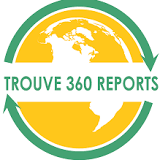How Gravitational Action Of Sun And Moon Influences Behaviour Of Plants And Animals — New Study Reveals


The gravitational tides are a perceptible and potent force which has always shaped the rhythmic activities of organisms, and all organisms on the planet have evolved in this context, he explained.
The researchers have performed a meta-analysis of the data from three previously published cases as part of the study. In these studies, the gravitational causality was not fully explored. The studies were based on the swimming activity of isopods, which are small shell-less crustaceans whose appearance on Earth dates back from at least 300 million years ago; reproductive effort in corals; and growth modulation in sunflower seedlings inferred from autoluminiscence (luminiscence of a substance due to energy originating within itself). The researchers analysed the results of their own investigations and the data from the literature.
Gallep said that local gravitational tides are sufficient to organise the cyclical behaviour of these organisms, even in the absence of other rythmic influences such as lighting or temperature. He explained that gravitational oscillations continue to exist, and may modulate the behaviour of living organisms.
The rhythmic patterns exhibited by the organisms are well-known and have been widely studied. The patterns include circadian rhythms, which are linked to the day-night or light-dark cycle. Even when the factor light is isolated under laboratory conditions, some rhythmic cycles are maintained, the study found.
Gallep said that crustaceans and other coastal organisms modulate their behaviour in time with the ebb and flow of the tides, in a cycle of approximately 12.4 hours that derives from lunisolar dynamics. This is true even when they are moved to a laboratory with stable and controlled aquatic conditions, he said. The pattern was observed to persist for several days, matching lunisolar tidal timing at the site where the organisms were collected in nature.
The combined gravitational effect of the Sun and Moon corresponds to only a millionth of Earth's gravity. Yet, it is not only sufficient to cause large-scale tidal fluctuations in oceans, rivers and lakes, but also to move the tectonic plates.
This gravitational fluctuation causes the Large Hadron Collider (LHC), operated by the European Organization for Nuclear Research (CERN), which has a circumference of 27 kilometres, to be vertically displaced by one millimetre.
Gallep first observed periodicities in the experiments involving autoluminiscence with seed germination. He said that changes in the signal collected appeared every 12 or 24 hours, but differed in each germination test.
The study said that gravitational waves do not affect just the simplest organisms. Humans kept in the dark tend to establish a cyclical fluctuation lasting 24.4 to 24.8 hours, in harmony with the lunar cycle. People who spend long periods in caves have been found to exhibit this behaviour.
This governs the alternation of sleep and wakefulness, meal times, and other metabolic functions.


 United Kingdom
United Kingdom Argentina
Argentina  Australia
Australia  Austria
Austria  Brazil
Brazil  Canada
Canada  Germany
Germany  Ireland
Ireland  Italy
Italy  Malaysia
Malaysia  Mexico
Mexico  New Zealand
New Zealand  Poland
Poland  South Africa
South Africa  United States
United States 



















